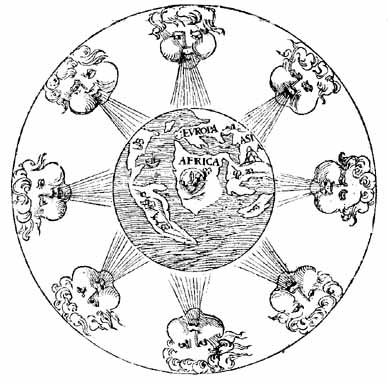| Full Text | Postmodernism rose on a tide of disillusionment with socialism in both its humanist and its totalitarian incarnations. The resulting triumph of capitalism, and along with it the flowering of what were once known as the seven deadly sins, found a rationalization in relativism. In the postmodern age, faith in the Unseen Hand of free-market anarchy displaced a belief in universal human rights and certainties about natural law. Truth-seeking – science – became a servant to artifice – technology. Truth-telling disappeared from sight. Truth-loving belonged to antimodernist, religious revolutionaries. Good scholarship there certainly was, and many truths were discovered, but the enterprise was conducted sotto voce and, much of it, in isolation. This time of unreason, lasting for nearly a generation, has ended abruptly with anxiety about material survival triggered by the onset of what may be called the Second Great Depression. Beyond Borders, a collection by young scholars put together at the climax of the postmodern age, heralds a new Enlightenment.
Young people, unburdened by a comprehensive view of the field and lacking a rap sheet of personal reversals, are able to zero in on pretension and foolishness. They can cast a sceptical eye over the fashions of their time (which, of course, to some extent they assimilate). There is epochmaking innovation by middle-aged writers – who may appear suddenly as novas in the heavens – but the shock of the new often comes from minds recently formed, from students, who sometimes change the parameters of academic discussion by their precocious labour (Althusser and Balibar’s Lire le Capital comes to mind).
[p. 300]
In their introduction to Beyond Borders, Josep Simon and Ne´stor Herran emphasize that the collection consists of contributions for the most part by postdoctoral scholars who seek, in the time-honoured fashion, to relate their particular research topic to larger concerns. They are concerned about the fragmentation of the field of history of science (they include medicine and technology in the mix). They express unhappiness with the parochial (that is to say, national and local) orientation of postmodern research. They are uneasy with the domination of the field by Anglo-American scholars, a diminishing number of whom show facility or interest in texts not written in English. To address these failings, the editors propose focusing on three large themes: comparison, communication and appropriation. The themes are interrelated. Comparison explicitly challenges the postmodernist primacy of parochial paths for knowing the natural world. Communication relates to knowledge networks, whether geographical, pedagogical or avocational. Appropriation dignifies the possibility of original and general insight in science carried out far from centres of money and high culture.
Europe from the Scientific Revolution forward is the nearly exclusive focus of the contributions, which divide into five parts. The first part of the collection is devoted to mutations of knowledge in mathematics and physics: Daniele Cozzoli discusses the translation of Descartes’s Meditations from Latin into French, Patrick Boner treats astrology in Kepler’s thought and Tayra Lanuza recounts astrological study at three Spanish universities. The second part, on how science was disseminated, focuses on instruments of education, with attention to the discipline as an explanatory device: Mónica Blanco Abellán examines the reception in France and Italy of Johann Bernoulli’s instructions on differential calculus, and Josep Simon examines the British reception of Ganot’s nineteenth-century textbook on physics. The third part is devoted to the popularization of science: Pedro Ruiz-Castell on solar eclipses in early twentieth-century Spain, Tiina Männistö on women’s physiological guides in early twentieth-century Finland and Matiana González-Silva on more recent Spanish debates about funding genetics. The fourth part concerns national traditions and styles : thermodynamics in nineteenth-century France by Faidra Papanelopoulou and high-altitude physiology in twentieth-century Peru by Jorge Lossio. The fifth part, apologetically called ‘Science in the periphery’, is about modern Spain: Ximo Guillem-Llobat on food safety in Valencia, Ne´stor Herran on radioactive waters, and Xavier Mañes on crystallography.
It would not be unkind to observe that many of these themes have previously been treated by scholars educated before or fortified against the postmodernist night. Little attention is given in the collection to more than a meter of shelf space occupied by Historical Studies in the Physical and Biological Sciences, beginning in 1969 as the journal of choice for the exact and experimental sciences in the modern period (commentary may be found in HSPBS 37 (2007), Part Two). This journal led the way in the study of modern scientific disciplines. The editorial commentators give only passing mention to science beyond the North Atlantic world – one of the most exciting topics in our field over the past generation. They omit introducing how our understanding of ancient and medieval science has been transformed since the publications of Needham and Neugebauer. The contributors generally avoid counting, whether specie, species or people.
Notwithstanding its iconoclastic premise, the collection makes gratuitous reference to fashionable ‘theory’ generated at largely anglophone institutions of wealth and prestige. These invocations seem offered to deflect anathema, and they may be passed over in the way that we put aside the Islamic invocations prefacing medieval treatises on algebra and astronomy. The editors’ Anglocentric angst seems misplaced. Colleagues with whom I share English as a mother tongue will forgive me if I suggest that the centre of our field is located, and has been located for some time, in Paris, with its fecund academic climate offering a sometimes precarious existence to scores of industrious thinkers.
But these are cavils. The writing here is clear and vigorous, and a significant part of its inspiration comes from authors on the margin of orthodoxy. The contributors explicitly reject the anti-intellectual orientation of high postmodernism, which denies integrity to science and fails to distinguish science from witchcraft. The contributors are unambiguous about the artificial basis of technology and the natural basis of science. They recognize the significance of disciplinarity and institutionalization. They have delivered a credo and a programme for going beyond postmodernist dogma.
LEWIS PYENSON
Western Michigan University
|

